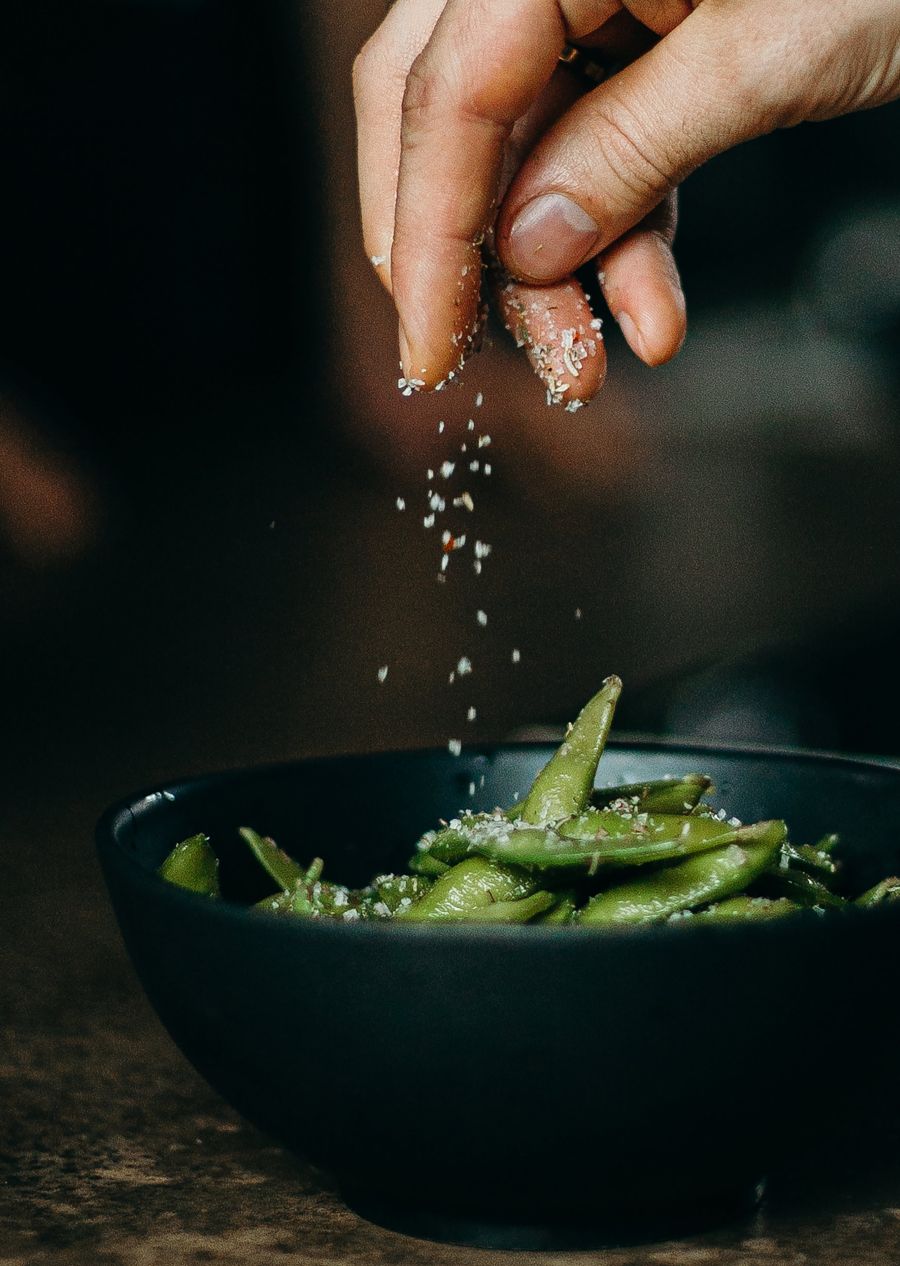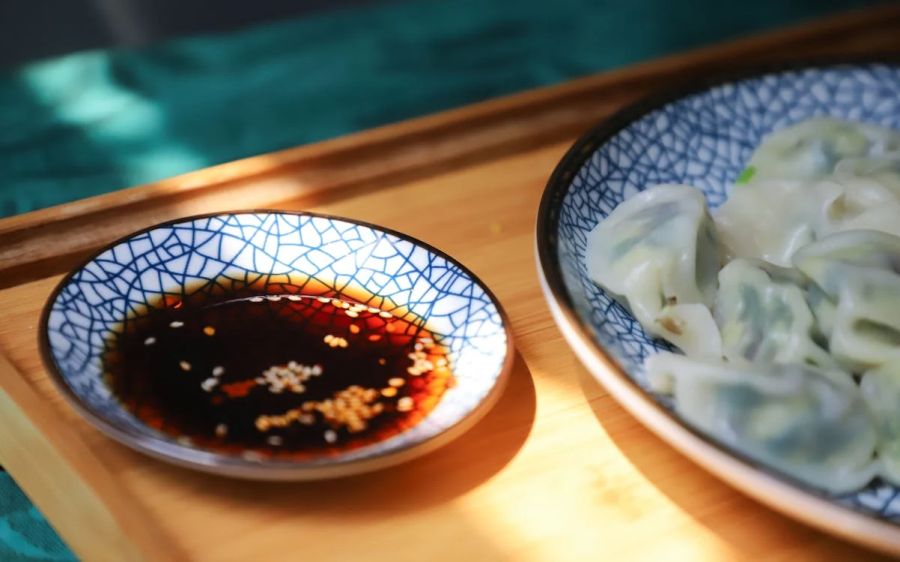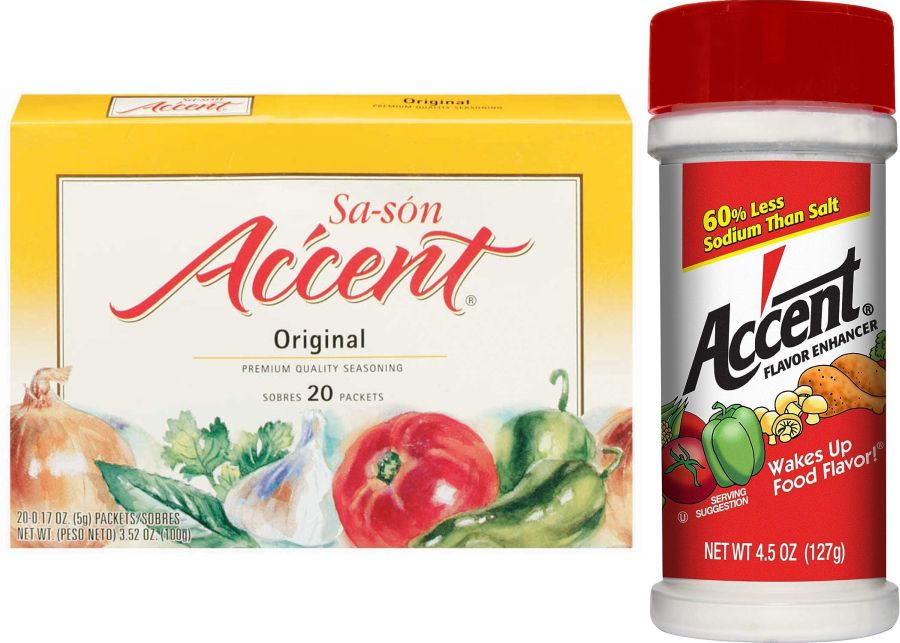Accent seasoning is fairly popular, especially for several Asian dishes and recipes. You could as easily use it for several other recipes. After all, it’s mostly just salt and some other ingredients.
So, the easiest accent seasoning substitute would be common salt, perhaps with an added touch of paprika and pepper. If you have MSG, it’s a perfect substitute for accent seasoning, since MSG is the main ingredient for this seasoning.
Depending on the flavor you’re looking for, there might be some other combinations with herbs, salt, or other seasonings that can work as a decent replacement for Accent Seasoning.
Let’s get into the details and see available substitution options!
Top Accent Seasoning Substitutes You Can Use
1. MSG (Sometimes Known As Ajinomoto)
MSG, also known as Monosodium Glutamate, is a flavor enhancer that’s often employed in several recipes. It pretty much acts like salt, though it adds a wonderful flavoring touch to the food. It’s widely associated with the savory umami sensation of food flavors and is considered amongst the five basic tastes.
There is a whole exciting science about how our taste receptors respond to glutamates (like monosodium glutamate) and how that translates to the deliciousness we recognize in food. In fact, the word umami, though a Japanese word, can be used reasonably well as a description of taste from glutamates like MSG.

But, I digress.
Coming back on topic, MSG is a wonderful substitute for Accent Seasoning, since the seasoning is mostly made from MSG, plus a few herbs and spices. While those herbs and spices are not to be underestimated, the main driver of the flavor for this seasoning is MSG.
In many places, MSG is also known as Ajinomoto. Technically, Ajinomoto is a company (brand) that’s well-known for selling MSG. But, in many cases, the company’s name has become synonymous with its most famous product (think Kleenex and tissues).
There have previously been doubts and concerns about the safety of MSG as a food. Although, now it’s largely considered to be safe for consumption. The FDA considers MSG in the “generally recognized as safe” (GRAS) category.
You can substitute MSG for Accent Seasoning in an equal ratio. You may consider adding a touch of ground pepper and/or paprika to the MSG for a flavor profile closer to the seasoning.
2. Salt
There is a chance that someone wants a substitute for accent seasoning precisely to stay away from MSG. In such a scenario, the conventional salt in your kitchen can be just as useful. Common salt will handle the salty touch of the seasoning without a problem.
However, common salt will not add the same umami flavor. In some ways, the whole point of MSG is its umami touch. So, if you forgo MSG, you might not get the same flavor.
On the other hand, if you are preparing a savory dish that has other umami flavors (examples include cheeses, tomatoes, fish, meats, and more), salt can easily substitute accent seasoning.

To get a flavor closer to the real accent seasoning, you can also add some of the constituent spices. These include (powdered) cayenne pepper, black pepper, thyme, sweet basil, and bay leaf.
Conventionally, you can substitute accent seasoning with salt in a 1:1 ratio.
3. Other Salts
Does common salt not tickle your imagination and recipe needs as a substitute to accent seasoning? Well, there are other varieties of salt you can consider for similar needs and flavors. These include:
- Kosher salt
- Sea salt
- Indian black salt
- Korean bamboo salt
Of these, the first two are viable options. Indian black salt may not be a great pick in this scenario because of its deeper flavors. Also, it works better as sprinkled salt and garnish. Korean bamboo salt does work just fine, but I think it’s way too expensive of an ingredient to be so casually used as a substitute. If you do think your recipe can benefit from Korean bamboo salt, it might be worth a shot.
However, in most cases, just using common salt or even kosher salt should be the more sensible decision.
4. Creole Seasoning
One flavorful seasoning to replace another flavorful seasoning. Sounds like a plan!
As the name implies, creole seasoning often finds its place in Creole food. It’s also very flavorful and rich with plenty of herbs and spices.
The ingredients include kosher salt, smoked paprika, granulated onion, dried oregano, black pepper, dried basil, dried thyme, cayenne pepper, and a few others.
There is a huge overlap between the ingredients of creole seasoning and accent seasoning. One of the notable differences is that creole seasoning uses kosher salt, while accent seasoning uses MSG. Creole seasoning is flavorful enough to be as good a substitute as any for accent seasoning.
Generally, the substitution ratio should stay equal. So, you can use one teaspoon of creole seasoning for an equal amount of accent seasoning.
5. Cajun Seasoning
Here’s another great seasoning choice to replace accent seasoning in your recipe. Cajun seasoning has largely the same components as Accent seasoning, minus the MSG. However, the ratio is different, so cajun seasoning usually is more garlicky, smokey, and can be fairly hot.
The heat comes from cayenne pepper and can vary between brands. Ideally, you’d want something that’s not very hot to be a decent substitute for accent seasoning.
Cajun seasoning can substitute accent seasoning in an equal ratio.
6. Soy Sauce

Using soy sauce as a substitute for accent seasoning is questionable in some cases, but it is workable. Soy sauce offers a component that most alternatives to accent seasoning miss – the umami flavor. If you have a savory recipe that’s missing the umami touch with the loss of the seasoning, using soy sauce can make up for it.
However, there are obvious limitations here, considering the flavor, color, and texture of soy sauce are all very different from Accent Seasoning.
So, this isn’t a solution that can work for most recipes. Instead, it’s an option to use in specific scenarios where you feel the umami touch is necessary and the different properties of soy sauce can be handled by the recipe.
7. Beef Broth Or Beef Stock
Beef broth and stock as a substitute for accent seasoning is essentially similar to the use of soy sauce as the substitute. While the flavors of the stock are quite different from accent seasoning, it offers the same umami touch.
So, if you feel like your recipe without accent seasoning is missing something, it is worthwhile to consider an ingredient that adds the umami flavor without disrupting the recipe.
Considering the texture of beef stock, it’s best used as an alternative only in recipes with a substantial amount of liquid.
8. Bouillon Cubes Or Powder
Bouillon cubes or powders are usually made from meat or even vegetable stock. They may also contain other ingredients like spices, herbs, and MSG, though it varies between brands and types.
Again, the goal here is to add that umami touch to your flavoring. And it can work quite decently.
Again, there are limitations on recipes that can use this substitute. However, Bouillon powder and cubes can get quite close to the accent seasoning flavor.
Understanding Accent Seasoning And Its Recipe
What Is Accent Seasoning?
Let’s get a better understanding of Accent Seasoning. Simply put, this is a mix of some salts, spices, and herbs that gives it a wonderful taste and umami flavoring that makes it oh-so-desirable.
The product is largely known as Accent Sa-Son Seasoning, Original flavor. This is the product that we know and love as Accent Seasoning.
The key element here is MSG or monosodium glutamate. It brings that wonderful touch of the umami flavor. It’s also naturally salty, so it covers a bit of that flavor as well.
However, the seasoning is more than just MSG. It also has other ingredients that give it its characteristic taste and flavor. These ingredients are salt, chili pepper, powdered cumin, flaked/powdered oregano, and paprika, garlic, and onion extracts.
So, while MSG is the key ingredient here, the seasoning is much more than that. The flavors and aroma of the other ingredients play a big role in making this so likable.
Accent Seasoning vs Accent Flavor Enhancer

When shopping for Accent Seasoning, you could likely run into Accent Flavor Enhancer. The names are similar and some stores and even online search engines tend to confuse the two.
However, there is a difference between the two.
I’ve seen many food bloggers and recipes make the mistake of assuming they’re both the same, so it’s worth clarifying.
Accent Flavor Enhancer is just MSG. There are no additional ingredients. On the other hand, Accent Seasoning has a mix of spices and herbs in addition to the MSG. Those spices and herbs make quite a difference for the seasoning.
Homemade Accent Seasoning – The Recipe
So, let’s try putting together the ingredients required for Accent Seasoning. Many people don’t have these ingredients at home, so getting the seasoning is often cheaper and more convenient than making it at home. However, if you’d like to try making this seasoning at home, this recipe can work.
It’s also worth noting that while Accent Seasoning discloses its ingredients, the company doesn’t disclose the proportion or the exact recipe. Naturally, that means we’re not using the same recipe as the commercial seasoning. However, I do think that this gets pretty close in flavor.
Accent Seasoning Ingredients You’ll Need
- 5 oz MSG
- 1 oz table salt (if you don’t want to use MSG, you can use 6 oz table salt)
- 1 tablespoon cayenne pepper (ground)
- ½ tablespoon ground black pepper
- ½ tablespoon onion powder
- ½ tablespoon garlic powder
- 1 teaspoon ground thyme
- 1 teaspoon ground bay leaf
- 1 teaspoon ground sweet basil
This isn’t an exact recipe, so feel free to change the ingredients or make small adjustments to their amounts to better suit your tastes.
Putting It All Together
To complete your homemade DIY accent seasoning recipe, just put all the ingredients together and mix them up thoroughly. Place the seasoning in a dry, airtight jar and use as desired!
Conclusion
What are your options if you want an accent seasoning substitute? The article here goes into detail. But, the simplest option is to use MSG. Or, if you want something more convenient, you can simply use common salt or other salt types. Adding a touch of some spices can help get the flavor closer.
Other similar seasonings like cajun or creole seasoning can also do the trick.
Or, if you’re aiming for that umami touch, consider other ingredients like soy sauce or bouillon cubes.

